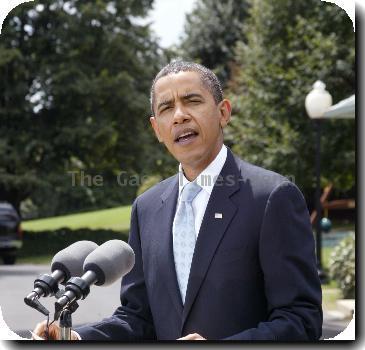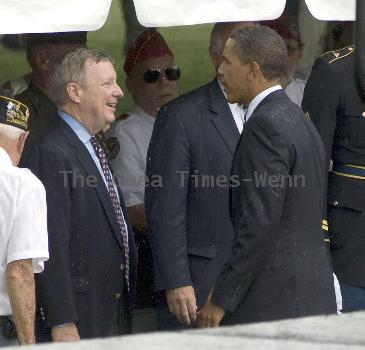Oil slick drifts close to Fla. beaches as BP works on latest risky bid to reduce Gulf gusher
By Greg Bluestein, APWednesday, June 2, 2010
Oil nears Fla. beaches as BP tries risky cap move
PORT FOURCHON, La. — The BP oil slick drifted close to the Florida Panhandle’s white sand beaches for the first time as submersible robots a mile below the Gulf of Mexico made the latest risky attempt to control the seafloor gusher.
Even if it works, the current mission to cut a major pipe and cap it would only reduce the flow, not stop it. If it fails, it could make the largest oil spill in U.S. history even worse. The best hope for sealing the leak, until a permanent fix is possible in August, failed Saturday, when engineers were unable to plug it with heavy mud in a maneuver called a top kill.
Investors ran from BP’s stock for a second day Wednesday, reacting to the top kill failure and the Justice Department’s announcement that it was looking at criminal and civil probes into the spill, although the department did not name specific targets for prosecution.
Shares in British-based BP PLC were down 3 percent Wednesday morning in London trading after a 13 percent fall the day before. BP has lost $75 billion in market value since the spill started with an April 20 oil rig explosion and analysts expect damage claims to total billions more.
In Florida, officials confirmed an oil sheen Tuesday about nine miles from Pensacola beach, where the summer tourism season was just getting started.
Winds were forecast to blow from the south and west, pushing the slick closer to western Panhandle beaches.
Emergency crews began scouring the beaches for oil and shoring up miles of boom. County officials will use it to block oil from reaching inland waterways but plan to leave beaches unprotected because they are too difficult to protect and easier to clean up.
“It’s inevitable that we will see it on the beaches,” said Keith Wilkins, deputy chief of neighborhood and community services for Escambia County.
The oil has been spreading in the Gulf since the Deepwater Horizon rig exploded six weeks ago, killing 11 workers and eventually sinking. The rig was being operated for BP, the largest oil and gas producer in the Gulf.
Crude has already been reported along barrier islands in Alabama and Mississippi, and it has polluted some 125 miles of Louisiana coastline.
More federal fishing waters were closed, too, another setback for one of the region’s most important industries. More than one-third of federal waters were off-limits for fishing, along with hundreds of square miles of state waters.
Fisherman Hong Le, who came to the U.S. from Vietnam, had rebuilt his home and business after Hurricane Katrina wiped him out. Now he’s facing a similar situation.
“I’m going to be bankrupt very soon,” Le, 53, said as he attended a meeting for fishermen hoping for help. “Everything is financed, how can I pay? No fishing, no welding. I weld on commercial fishing boats and they aren’t going out now, so nothing breaks.”
Le, like other of the fishermen, received $5,000 from BP PLC, but it was quickly gone.
“I call that ‘Shut your mouth money,’” said Murray Volk, 46, of Empire, who’s been fishing for nearly 30 years. “That won’t pay the insurance on my boat and house. They say there’ll be more later, but do you think the electric company will wait for that?”
BP may have bigger problems, though.
Attorney General Eric Holder, who visited the Gulf on Tuesday, would not say who might be targeted in the probes into the largest oil spill in U.S. history.
“We will closely examine the actions of those involved in the spill. If we find evidence of illegal behavior, we will be extremely forceful in our response,” Holder said in New Orleans.
The federal government also ramped up its response to the spill with President Barack Obama ordering the co-chairmen of an independent commission investigating the spill to thoroughly examine the disaster, “to follow the facts wherever they lead, without fear or favor.”
The president said that if laws are insufficient, they’ll be changed. He said that if government oversight wasn’t tough enough, that will change, too.
BP has tried and failed repeatedly to halt the flow of the oil, and the latest attempt like others has never been tried before a mile beneath the ocean. Experts warned it could be even riskier than the others because slicing open the 20-inch riser could unleash more oil if there was a kink in the pipe that restricted some of the flow.
“It is an engineer’s nightmare,” said Ed Overton, a Louisiana State University professor of environmental sciences. “They’re trying to fit a 21-inch cap over a 20-inch pipe a mile away. That’s just horrendously hard to do. It’s not like you and I standing on the ground pushing — they’re using little robots to do this.”
Engineers have put underwater robots and equipment in place this week after a bold attempt to plug the well by force-feeding it heavy mud and cement — called a “top kill” — was aborted over the weekend. Crews pumped thousands of gallons of the mud into the well but were unable to overcome the pressure of the oil.
The company said if the small dome is successful it could capture and siphon a majority of the gushing oil to the surface. But the cut and cap will not halt the oil flow, just capture some of it and funnel it to vessels waiting at the surface.
BP’s best chance to permanently plug the leak rests with a pair of relief wells but those won’t likely be completed until August.
Bluestein reported from Covington, La. Associated Press writers Darlene Superville and Pete Yost from Washington, Curt Anderson from Miami, Brian Skoloff from Port Fourchon, Mary Foster in Boothville, and Michael Kunzelman also contributed to this report.
Tags: Accidents, Barack Obama, Coastlines And Beaches, Environmental Concerns, Florida, Louisiana, North America, Oil spill, Port Fourchon, United States



